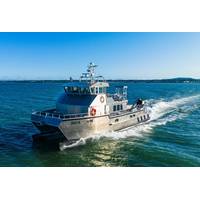
All American Marine Delivers Research Vessel for the University of Hawai’i at Mānoa
, Imua, is a 68.5’ x 25’ semi-displacement aluminum catamaran hull that was developed by Nic de Waal of Teknicraft Design in Auckland, New Zealand. The vessel contains proven design elements found in the recently commissioned research vessels Blue Manta and Shearwater built for BlueTide Puerto Rico and Duke University, respectively.The vessel was constructed to U.S. Coast Guard (USCG) standards and will operate as a multipurpose research vessel. The twin-engine speed and fuel-efficiency of this vessel will allow researchers to access and study marine environments in the Hawaiian Islands
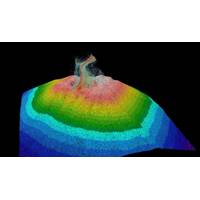
SOI Steps Ahead on Ocean Mapping
the chemical composition. Then we sent the ROV down, and almost every time they found something new.Our second cruise was to test technology, as we also have technology test cruises and not just science and exploration. That one was to test new sensors for coral reef health assessment around Puerto Rico. First, they found much more biodiversity than had previously been suspected around Puerto Rico. But the idea was to look at reactive oxygen. It is a new sensor that they were testing called SOLARIS. The prototype for that was an instrument called DISCO, similar, but for much shallower water,
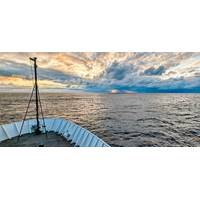
18 Ocean Experts Named to Federal Panel
with states, tribes, territories, communities, businesses and the broader marine community.”The new ORAP members are:Claudia Benitez-Nelson, National Academies’ Ocean Studies Board; University of South CarolinaDerek Brockbank, Coastal States OrganizationJorge Corredor, University of Puerto Rico at Mayagüez (retired)Danielle Dickson, North Pacific Research BoardTim Gallaudet, Ocean STL Consulting, LLCMary Glackin, National Academies’ Board on Atmospheric Sciences and ClimateEunah Hoh, San Diego State UniversitySandra Knight, Marine Board of the National Academies’ Transportati

Expedition Taps New Tech to Check Deep-Sea Coral Health
Scientists aboard Schmidt Ocean Institute's R/V Falkor (too) have returned from an expedition to study the impact of climate change on deep water corals. Scientists from the mainland U.S. and Puerto Rico found greater biodiversity than previously known in Puerto Rican waters and may have identified several suspected new species of corals, collecting over 300 samples across 75 different species. Research will be conducted in the coming months to identify and name any new species.The 20-day expedition included researchers from Woods Hole Oceanographic Institution (WHOI), Lehigh University
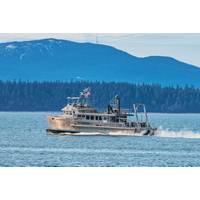
AAM Delivers Survey Vessel for NV5-Geodynamics
many other scientific survey missions, Shackleford is a 73- by 26.7-foot semi-displacement aluminum catamaran developed by Nic de Waal of Teknicraft Design in Auckland, New Zealand. The newbuild leverages fundamental design elements of the Duke University Marine Lab’s Shearwater and Blue Tide Puerto Rico’s Blue Manta, both built by All American Marine and proven successful in near-coastal research environments.Named after Shackleford Banks, the southernmost barrier island in the Cape Lookout National Seashore chain and a nod to the region’s rich maritime history, the Shackleford was
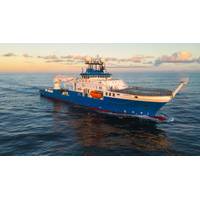
Schmidt's Newly Refitted Research Vessel Falkor (too) Launched
launched and is ready to be used by scientists worldwide to push the frontiers of deep sea expedition.Funded by Schmidt Ocean Institute founders Eric and Wendy Schmidt, the 110-meter global-class research ship, Falkor (too), was refit at Freire Shipyard in Vigo, Spain, with sea trials taking place off Puerto Rico. It will now embark on a series of expeditions and be available to scientists and technologists globally at no cost in exchange for making their research and discoveries publicly available. The ship replaces Schmidt Ocean Institute’s previous research vessel, which was in service for a decade
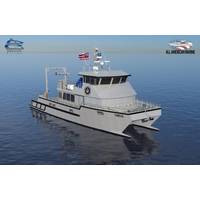
AAM to Build Research Vessel for the University of Hawaiʻi at Mānoa
.5’ x 25’ semi-displacement aluminum catamaran hull that was developed by Nic de Waal of Teknicraft Design in Auckland, New Zealand. The vessel will contain proven design elements found in the recently commissioned and successful research vessels Blue Manta and Shearwater built for BlueTide Puerto Rico and Duke University, respectively.The vessel is being constructed to U.S. Coast Guard (USCG) standards for service in waters where the range to refuge is 150 nautical miles or less and will operate as a multipurpose research vessel in the Hawaiian Waters and Offshore on Ocean Routes for a crew
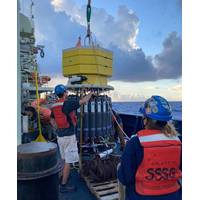
Deep-sea Research an 'Eye-Opener' for URI student
When Phil Parisi boarded the research vessel Atlantis this summer for an expedition to the Puerto Rico Trench, he didn't quite know what to expect. Parisi, who is pursuing a master's degree in ocean engineering at the University of Rhode Island, joined URI Professor Christopher Roman and a team of scientists from the Woods Hole Oceanographic Institution for his first deep-sea research experience."I was in awe of the massive operation it took to do science in the open ocean," said Parisi. "It was incredible to see the life that exists in the deepest parts of the ocean. It’s
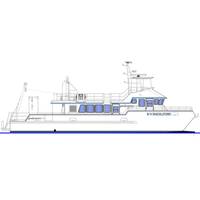
All American Marine Inks Deal to Build Geodynamics/NV5 Wind Survey Vessel
. R/V Shackleford is a 73 x 26.7-ft. semi-displacement aluminum catamaran hull that was developed by Nic de Waal of Teknicraft Design in Auckland, New Zealand. The vessel will have the fundamental, and primary design elements of the Duke University Marine Lab’s R/V Shearwater and Blue Tide Puerto Rico’s R/V Blue Manta that were both recently commissioned.R/V Shackleford is named after the southernmost barrier island in the Cape Lookout National Seashore chain, a region rich in maritime history. The vessel will be built to USCG Subchapter T standards and will primarily operate off the


 February 2024
February 2024





